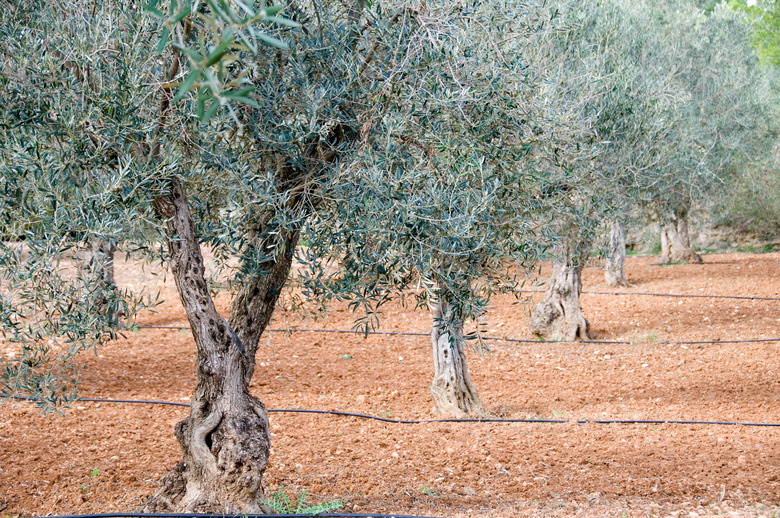Facts On Sweet Olive Trees
Step 1
The sweet olive tree produces white, tube-shaped flowers that bloom in clusters from spring through autumn, followed by the appearance of inedible, bluish-black fruit. Cultivar blooms are white and shades of yellow and orange. Temperature fluctuation and changes in the soil allow occasional blossoming of the sweet olive tree during the winter months.
Foliage
Step 1
Sweet olive is an evergreen tree with waxy, dark green leaves that are similar to those of a holly bush, according to Gardening Central. The sweet olive tree is sometimes referred to as a "false holly." Sweet olive foliage grows at the extreme ends of the tree branches, but the bare stems do not alter the pleasing appearance of the sweet olive tree, reports Floridata.com.
Soil
Step 1
Sweet olive trees live for many years, preferring full sun or partial shade, and moist, acidic soil to reach full growth potential. These plants are capable of growing in clay, loam and sand. With proper soil drainage, sweet olive trees can become resistant to drought conditions. Sweet olive trees will not withstand sodden, heavy soil.
Step 2
- The sweet olive tree produces white, tube-shaped flowers that bloom in clusters from spring through autumn, followed by the appearance of inedible, bluish-black fruit.
Growth
Step 1
Although sizes vary, a mature, sweet olive tree can reach a height and width of 20 feet, according to Magnolia Gardens Nursery. Pruning is unnecessary because the tree naturally forms an attractive shape on its own. However, branches that are cut back promote growth and help to maintain plant size and shape. Sweet olive trees are often used for hedges or planted as a screen for privacy.
Pests and Diseases
Step 1
Sweet olives are mainly healthy plants, but stressful conditions, such as poor soil or drought, may cause minor problems with pests and diseases. Botryosphaeria canker, a disease associated with prolonged lack of rainfall, causes leaves to wilt and turn yellow before changing to brown. Providing water and fertilization to the sweet olive tree might help to alleviate this problem, states the University of Illinois. Scales, the most common insects to harm a sweet olive tree, can be managed with horticultural oil.
Step 2
- Although sizes vary, a mature, sweet olive tree can reach a height and width of 20 feet, according to Magnolia Gardens Nursery.
- Scales, the most common insects to harm a sweet olive tree, can be managed with horticultural oil.
